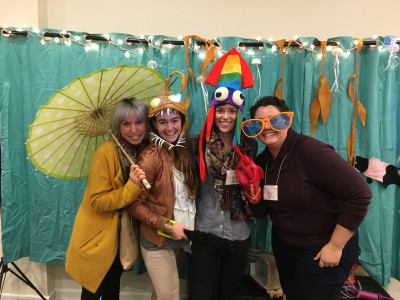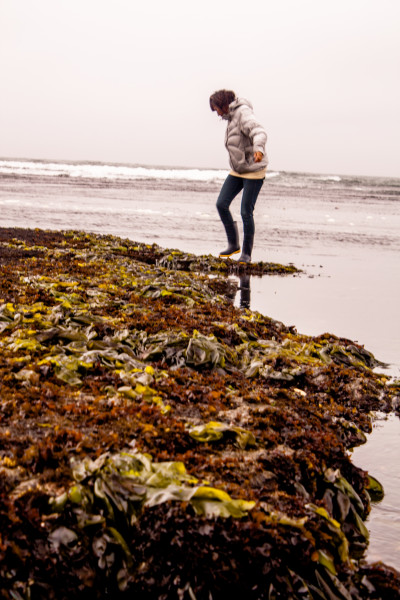Eve Robinson participated in the California Sea Grant state fellowship program in 2014, after finishing her PhD at the University of California, Berkeley. She was placed with the Ocean Science Trust, where she gained a new set of skills at the intersection of science and policy. Currently, she is working with federal agencies on the Klamath River, and with Humboldt State University on Rising Tides, a program supporting incoming freshmen and providing a science immersion experience in marine science and oceanography.

What was your background prior to the California Sea Grant state fellowship?
I received my doctorate from UC Berkeley in biomechanics, where I looked at small-scale predator-prey interactions in marine benthic communities. My academic background is marine science, with a focus in what some would classify as the physical sciences. After completing my graduate degrees, I knew I wanted to move in the direction of science integration, and this fellowship would give me the necessary toolset. I found there to be few opportunities offered to recent graduates that provide specific training in the boundary realm between science and policy.
Describe your placement and the experience you had during your fellowship.
A fellow graduate student informed me of the California Sea Grant state fellowship program. I applied, and was placed with the California Ocean Science Trust. I had an excellent experience — I really enjoyed the people I worked with, plus the projects in which I participated. One of the most exciting aspects of my fellowship was that I was able to support the work of the West Coast Ocean Acidification and Hypoxia Panel, which kicked off a year prior to my fellowship. Being a part of something of that scale, magnitude, and multi-dimensionality was inspiring. There was a steep learning curve; at first, I absorbed as much as I could, but then was expected to jump in and contribute which made the experience more rewarding. For this fellowship, you are often thrown into the deep end, but given the help and support you need to succeed.
The fellowship was like learning a new language, one very different from an academic setting. Once you begin your placement, you have to adapt and learn the language of your host agency. It was definitely an immersion experience, where you have a quick amount of time to produce, and I loved that.

If you had one takeaway from this experience what would it be?
My position with the California Ocean Science Trust wasn’t an academic placement, nor a policy placement. It was its own thing. Being in a boundary organization, I had to develop skills that were specific to this work. Integrating science and decision makers’ needs requires a very deliberate set of skills that I have found incredibly useful in all my following jobs.
Tell me about your career path after your placement.
I followed the state fellowship with a more research-focused postdoc at the University of Hawai'i at Manoa. I then came back to the California Ocean Science Trust as a Science Integration Fellow, where I brought together my experience with coastal and marine ecosystems, oceanography, and traditional knowledge.
I am now a research associate at Humboldt State University, working with the US Fish and Wildlife Service Arcata Fish and Wildlife Office, and the US Geological Survey California Cooperative Fish and Wildlife Research Unit. I have gone upstream to rivers in my new role— I am assisting a statistician and a team of people to better understand a parasite that infects Chinook salmon on the Klamath River. To predict the concentration of this parasite in the water, I am generating a model to link with existing models of salmon survival, with the aim to capture the effects of management flows intended to alleviate some impacts of the disease.
I will also be stepping in as the faculty director for Rising Tides, an educational program for incoming freshmen interested in marine science and oceanography at Humboldt State University. This program immediately plugs students into science, gets them in communication with professors in their field, and promotes a sense of community amongst the students. The goal of this program is to not only support student success in the first year, but also retention.

What advice do you have for future cohorts of state fellows?
Basically, jump in. The California Sea Grant State Fellows Program is a wonderful opportunity and entrance into the professional realm. You are not treated like an intern, which is immensely empowering. Your expertise is acknowledged, and useful. You are also able to learn a new language and skill set. Even though this opportunity is for one year, you can go as far as you are willing to take initiative. I recommend embracing this new culture and community, and seeing what it is like. I know a lot of people end up staying with their host agencies because they find the work enjoyable and rewarding.
###
Interview conducted and edited by Tayler Tharaldson, 2019 Science Communication fellow with California Sea Grant



